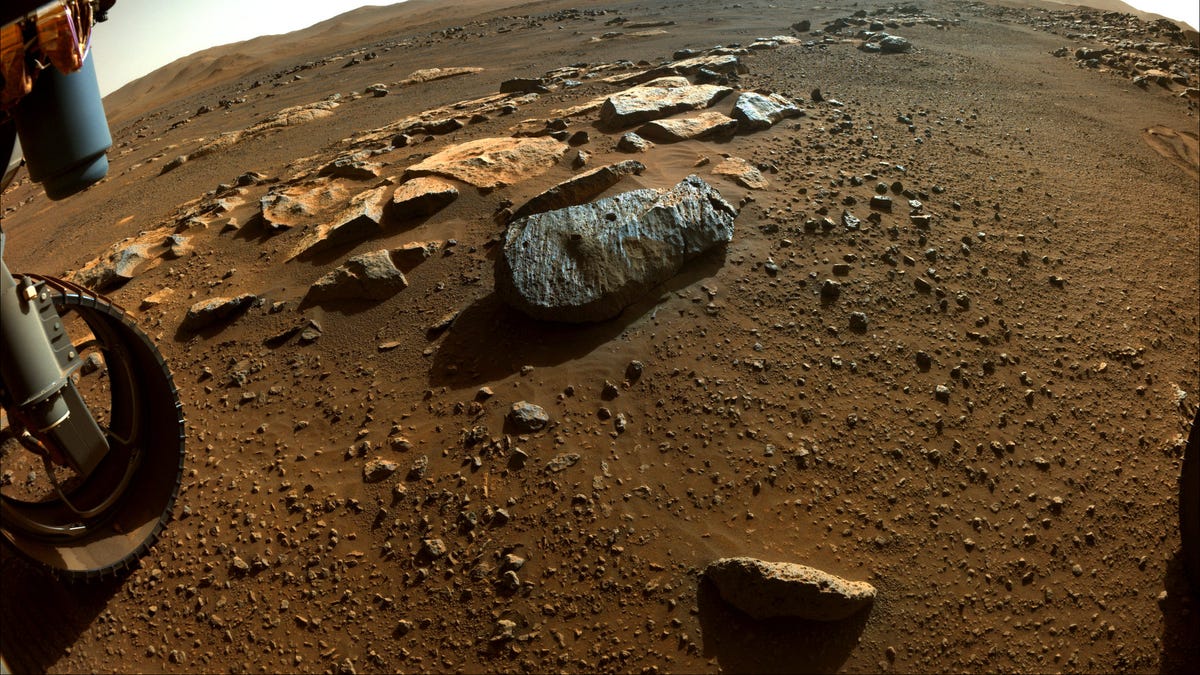NASA: Mars rover rocks reveal 'potentially habitable sustained environment'
The Perseverance rover's first Martian rock samples are giving scientists a scintillating peek into the watery past of an ancient lakebed.
NASA had high hopes for Mars' Jezero Crater and what it could tell us about the potential for past life on the red planet. The Perseverance rover's first rock core samples from this now-dry lakebed are giving scientists plenty of reason for enthusiasm.
"It looks like our first rocks reveal a potentially habitable sustained environment," Perseverance project scientist Ken Farley of Caltech said in a NASA statement on Friday. "It's a big deal that the water was there a long time." Researchers have been investigating just how long water had lingered on the lakebed. If groundwater was present for long stretches, it could have been conducive to microbial life.
After its first sample collection attempt crumbled, Perseverance triumphed by successfully drilling and stashing its first core sample from a different rock nicknamed "Rochette." It then followed that up with a second sample. Analysis shows Rochette appears to be volcanic in origin.
NASA has spotted other potentially habitable ancient regions on Mars, but the prospect of bringing a piece of one of these back to Earth is one of the major advancements of the Perseverance mission.
The samples could end up on Earth as soon as the early 2030s. NASA is working on an ambitious sample-return mission. A closer study under lab conditions on our planet could give scientists tons of information about the crater's history.
The Perseverance team spotted salts within Rochette that likely formed as water evaporated. "The salt minerals in these first two rock cores may also have trapped tiny bubbles of ancient Martian water," NASA said. "If present, they could serve as microscopic time capsules, offering clues about the ancient climate and habitability of Mars."
NASA's newest rover is seeking signs of ancient microbial life on the red planet. These initial results from its rock studies are an encouraging sign the Jezero Crater is the perfect place to explore to help answer the big question: Was there ever life on Mars?


